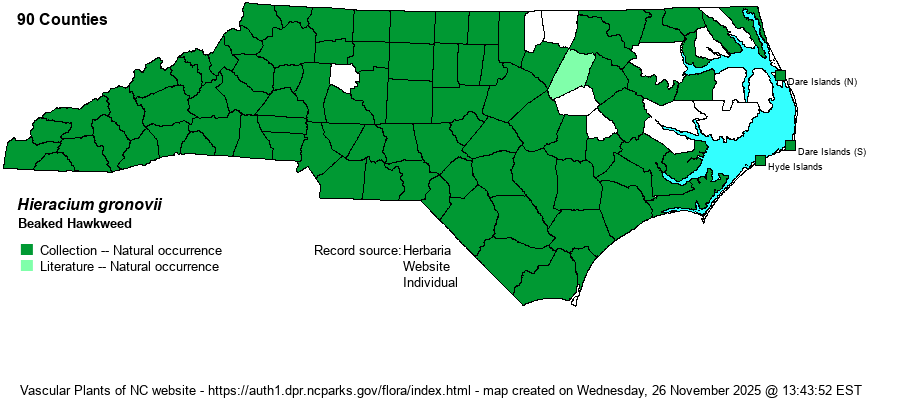| Author | L. | |
| Distribution | Throughout the state, including the Outer Banks.
MA to southern Ont. and KS, south to central FL and TX. | |
| Abundance | Common in the Piedmont and southern half of the Coastal Plain, including the Sandhills. Fairly common to common in the Mountains. Infrequent in the northeastern counties. | |
| Habitat | Dry to mesic or xeric, sandy to clayey soils of woodlands, forest openings, logging roads, trailsides, clearings, roadsides, yards. | |
| Phenology | Flowering and fruiting late July-October. | |
| Identification | Hawkweeds have either few/no stem leaves or several/many. Hairy Hawkweed has several, the basal ones elliptic and in a flat rosette, the higher ones smaller and narrower. The stem is 1-2 feet tall (rarely to 3 feet), long-hairy on the lower portion, shorter-hairy above. The inflorescence has a narrow outline (taller than wide), with short branches and roughly 20-50 heads. Each head is composed of ray florets only, and yellow. This is a frequently encountered late summer and fall plant. | |
| Taxonomic Comments | None
| |
| Other Common Name(s) | Queen-Devil, Hairy Hawkweed | |
| State Rank | S5 | |
| Global Rank | G5 | |
| State Status | | |
| US Status | | |
| USACE-agcp | UPL link |
| USACE-emp | UPL link |

